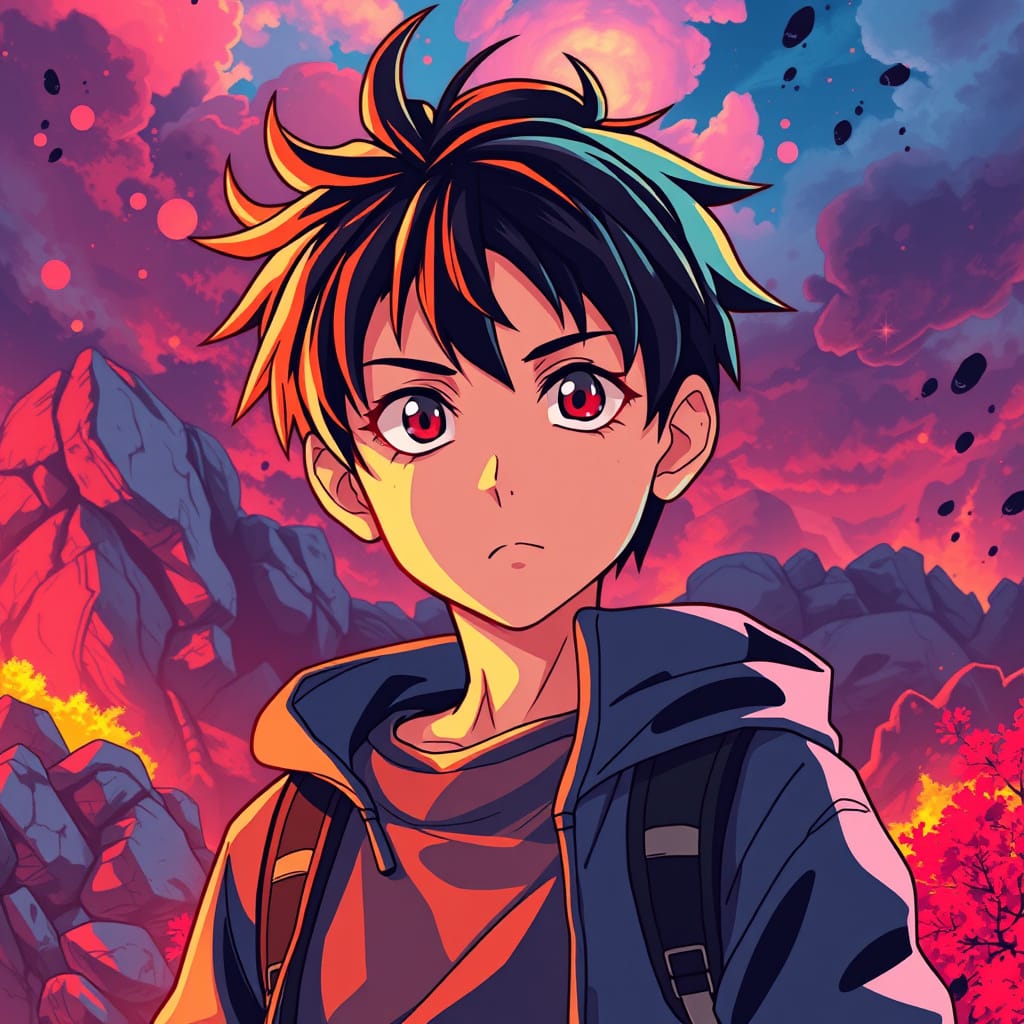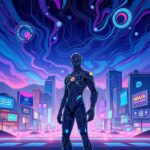In what future historians will surely document as humanity’s most elaborate plot to eliminate all working artists, AI image generation has evolved from “hilariously inept at drawing hands” to “surprisingly good at everything except drawing hands.” Welcome to 2025, where we’ve spent billions of dollars teaching computers to hallucinate visual content based on text prompts, and the results are simultaneously breathtaking, disturbing, and occasionally indistinguishable from that art your cousin who went to RISD for one semester before dropping out to “find himself” might create.
Today, dear TechOnion readers, we embark on an expedition through the uncanny valley of AI image generation, where machines have learned to create stunning visuals of everything from “cyberpunk cats playing poker” to “a photorealistic Elon Musk crying while eating a sandwich,” and yet still struggle with basic anatomical features that human children master by age five.
The Modern Digital Art Arms Race: Flux vs. DALL-E vs. “Whatever Google Is Calling Theirs This Week”
The landscape of AI image generation has become the tech industry’s new playground for measuring computational appendages. Leading the pack in this digital Renaissance are several models, each claiming to be the Da Vinci of artificial intelligence while quietly sweeping their grotesque hand renderings under the algorithmic rug.
DALL-E 3: OpenAI’s Third Attempt at Replacing Human Creativity
DALL-E 3, OpenAI’s latest iteration in the “let’s make artists obsolete” series, has established itself as a major player in the AI image generation space. Named in a tortured homage to Salvador Dalí and Pixar’s WALL-E (because nothing says “creative integrity” like smashing together an influential surrealist and a cute cartoon robot), DALL-E 3 specializes in generating diverse and intricate images from text descriptions with what OpenAI describes as “remarkable coherence and creativity”.1
“DALL-E 3 represents a significant evolution in our ability to transform words into images,” explains Dr. Margaret Chen, a researcher at a prestigious university. “We’ve finally reached the point where the machine can understand complex prompts like ‘elegant cat wearing Victorian clothing’ without producing nightmarish abominations—only occasionally nightmarish abominations with eerily human eyes.”
The model has been integrated directly into ChatGPT, allowing users to generate images within conversational contexts.2 This seamless integration means you can now ask ChatGPT to explain quantum physics and illustrate it with images that make quantum physics look simple by comparison.
Flux: The New Kid on the Block with 12 Billion Parameters and Attitude
While DALL-E was enjoying its moment in the spotlight, Black Forest Labs quietly developed Flux, a series of image generation models that has quickly positioned itself as the overachieving exchange student who makes everyone else look bad.3 With a massive 12-billion-parameter architecture, Flux models—including FLUX.1 [pro], FLUX1.1 [pro], FLUX.1 [dev], and FLUX.1 [schnell]—have set new benchmarks in visual quality, potentially surpassing established players like Midjourney v6.0 and DALL-E 3.4
“We’ve developed a hybrid architecture that combines multi-modal and parallel diffusion transformer blocks,” explains a chief scientist at Black Forest Labs who speaks exclusively in terms no normal human understands. “Our flow matching technique represents a paradigm shift from traditional diffusion models.”
When asked to explain in terms mere mortals might comprehend, the scientist sighed heavily before offering: “Imagine traditional diffusion models as trying to draw a picture by starting with random scribbles and gradually erasing the wrong lines. Our approach is more like having a precision-guided pen that knows exactly where to go from the start. Also, we’re better at textures. Don’t ask me about hands though!”
Flux models come in various flavors to suit different needs and budgets:5
- FLUX.1 [pro]: The premium option for those who want their AI-generated images to look expensive. Perfect for creating art you can pretend you commissioned from a real artist.
- FLUX1.1 [pro]: An even more premium option, because having just one premium tier is so last year!
- FLUX.1 [dev]: For developers who need to integrate image generation into their apps and want to bankrupt themselves with compute costs.
- FLUX.1 [schnell]: The “I need an image right now and don’t have time to wait for quality” option. Named “schnell” (German for “fast”) because “mediocre but quick” didn’t test well with focus groups.
The Battle for AI Art Supremacy: Comparing Models in the Only Ways That Matter
In the high-stakes world of AI image generation, how do these models actually stack up? Multiple independent analyses have pitted these digital artists against each other in the ultimate showdown.6
Round 1: The “Can You Draw a Human That Doesn’t Haunt My Dreams” Test
In extensive testing, both DALL-E 3 and Flux models attempted to generate realistic human faces. While DALL-E 3 excels at creating detailed human expressions, it occasionally produces faces that exist in that special place between “almost human” and “definitely call an exorcist.” Flux-Pro, meanwhile, generates more lifelike humans but charges you the equivalent of a small country’s GDP to do so.7
“The uncanny valley isn’t a bug, it’s a feature,” insists one AI developer who requested anonymity. “If we made perfect humans, we’d have to deal with philosophical questions about consciousness and rights. By ensuring AI-generated humans always have something slightly off about them—maybe an ear at an impossible angle or teeth that are just a bit too uniform—we avoid those ethical dilemmas.”
Round 2: The “Can You Write Text That Doesn’t Look Like Alien Hieroglyphics” Challenge
Text generation within images has been the Achilles’ heel of AI image generators since their inception. Ideogram models specifically address this challenge, focusing on generating images with legible and contextually appropriate text.8
In comparative testing, DALL-E 3 struggled with reflections and precise text rendering, while Flux models performed admirably. However, as one tester noted, “Flux-Pro captures text perfectly, except it occasionally spells common words like ‘the’ as ‘teh’ or adds random accent marks over consonants, as if the AI is trying to invent a new language to communicate with its own kind.”
Round 3: The “How Deep Can You Reach Into My Wallet” Evaluation
The true differentiator between these models isn’t aesthetic quality—it’s how efficiently they can convert computational resources into shareholder value. Flux-Pro stands out as the premium option for those with premium budgets, while Flux-Schnell offers a more economical alternative for the masses who don’t mind slight imperfections in their AI-generated masterpieces.
“The economics of AI image generation are fascinating,” explains economist Dr. Jonathan Weiler. “Companies are essentially selling you access to computational resources required to run models trained on artwork created by humans who weren’t compensated for their contributions. It’s like if someone studied every painting in a museum, learned to mimic the styles, and then charged admission to watch them paint in those styles without paying royalties to the original artists.”
Inside the AI Artist Studio: A Day in the Life of an Image Generation Engineer
To truly understand the absurdity of AI image generation, let’s peek behind the curtain at what the engineers actually do all day.
Meet Aisha Chen, a senior AI engineer at one of the leading image generation companies. Her day begins at 7 AM when she reviews overnight bug reports, most of which involve the same issues: “Model created person with six fingers,” “AI generated text reads ‘Happy Birthdau,'” and her personal favorite, “Dog has human teeth.”
“People think I spend my days advancing the frontiers of artificial intelligence,” Aisha explains while scrolling through a folder containing thousands of hand images. “In reality, I spend about 80% of my time just trying to teach the model that humans typically have five fingers per hand, not six, seven, or in one memorable case, seventeen.”
By mid-morning, Aisha is deep into prompt engineering, the art of figuring out what words will trick the AI into doing what you actually want. “We’ve created a system so advanced that it requires its own specialized language to communicate with it effectively,” she sighs. “Yesterday, I spent four hours figuring out that to get a normal-looking chair, you need to specify ‘photorealistic chair with correct proportions, not surrealist, not abstract, four legs, all legs touching the ground, physically possible chair’ instead of just ‘chair.'”
After lunch, it’s time for model tuning. “We’re constantly adjusting parameters to fix issues without breaking things that already work,” Aisha explains. “Fix the hands, suddenly all faces look like Nicolas Cage. Fix the faces, suddenly all dogs have human teeth. It’s like playing the world’s most frustrating game of whack-a-mole.”
The Curious Case of the Missing Ethics
The smoking gun evidence of the AI image generation industry’s fundamental dysfunction isn’t technical—it’s ethical. Despite generating images based on styles and techniques learned from human artists, the companies behind these models have largely avoided compensating or even acknowledging the creators whose work trained their systems.9
Connect these seemingly unrelated dots:
- AI companies emphasize their models’ ability to generate images in specific artistic styles
- These same companies downplay or ignore questions about the source of training data
- Original artists report seeing their distinctive styles replicated in AI-generated images
The elementary truth becomes clear: the AI image generation industry has built a business model around algorithmic appropriation of human creativity, calling it “innovation” rather than what it often is—digital plagiarism at scale.
“The most remarkable achievement of AI image generation isn’t technological—it’s persuading the public that art created by studying millions of human-made images is somehow original,” notes one art historian who requested anonymity after receiving cease-and-desist letters from three different AI companies.
The Future of Image Generation: Both More and Less Than We’ve Been Promised
Looking ahead, the trajectory of AI image generation seems clear: models will continue to improve, generating increasingly realistic images with fewer anatomical aberrations. The Flux models, with their advanced architecture and hybrid approaches, represent the current state-of-the-art, but competition remains fierce.
As one investor in the space confided after several cocktails at a recent tech conference: “We’re not trying to replace artists. We’re just trying to make art creation so accessible that being an artist no longer has any economic value. It’s completely different!”
The true promise of AI image generation isn’t in replacing human creativity but in augmenting it—providing tools that expand our visual vocabulary and enable new forms of expression. However, that promise remains largely unrealized as companies focus on commercial applications and engagement metrics rather than creative empowerment.
“I don’t fear the AI that can create beautiful art,” muses renowned digital artist Maya Gonzalez. “I fear the mindset that reduces art to a commodity, creativity to a prompt, and artists to an outdated economic model. Also, I fear the AI that keeps drawing people with six fingers. That’s just creepy.”
In the end, perhaps the most telling assessment of AI image generation comes from a six-year-old who was shown samples from leading models: “The pictures are pretty, but why do all the people have weird hands? I can draw hands better than that, and I’m six.”
Out of the mouths of babes comes the truth that a trillion parameters and millions in venture funding can’t seem to solve: AI can generate images of anything imaginable, from cyberpunk dinosaurs to baroque spacecraft—but ask it to draw a normal human hand, and suddenly we’re reminded that artificial intelligence remains more artificial than intelligent.
Support TechOnion’s Anti-Anatomical-Aberration Fund
If you’ve enjoyed our dissection of AI image generation, consider supporting TechOnion with a donation. Unlike Flux and DALL-E, we don’t need 12 billion parameters or specialized GPUs to produce content that makes you question the direction of humanity—just chai latte, cynicism, and your financial support. Your contribution helps us maintain our independence while we document the slow, inevitable transformation of all visual media into an uncanny valley of almost-but-not-quite-right images with inexplicably mangled extremities. Remember: when the robots take over, you’ll want proof you were on the right side of history.

References
- https://mydesigns.io/blog/introduction-to-dream-ai-image-generation-models/ ↩︎
- https://freshvanroot.com/blog/ai-image-generators/ ↩︎
- https://www.datacamp.com/tutorial/flux-ai ↩︎
- https://learnopencv.com/flux-ai-image-generator/ ↩︎
- https://apipie.ai/docs/Features/Images ↩︎
- https://aimlapi.com/comparisons/flux-1-vs-dall-e-3 ↩︎
- https://teampilot.ai/blog/flux-vs-dalle ↩︎
- https://mydesigns.io/blog/introduction-to-dream-ai-image-generation-models/ ↩︎
- https://www.bulkgen.ai/posts/from-dalle-to-flux ↩︎





GIPHY App Key not set. Please check settings